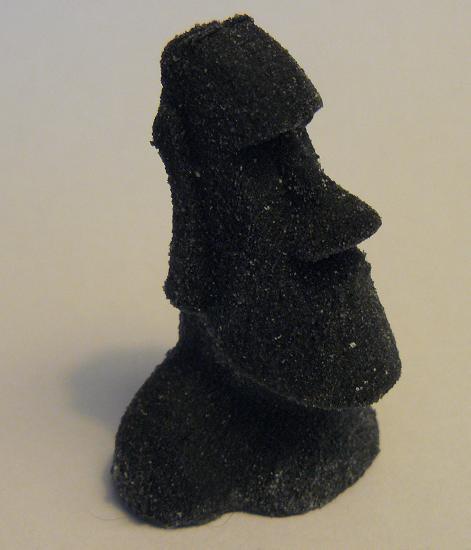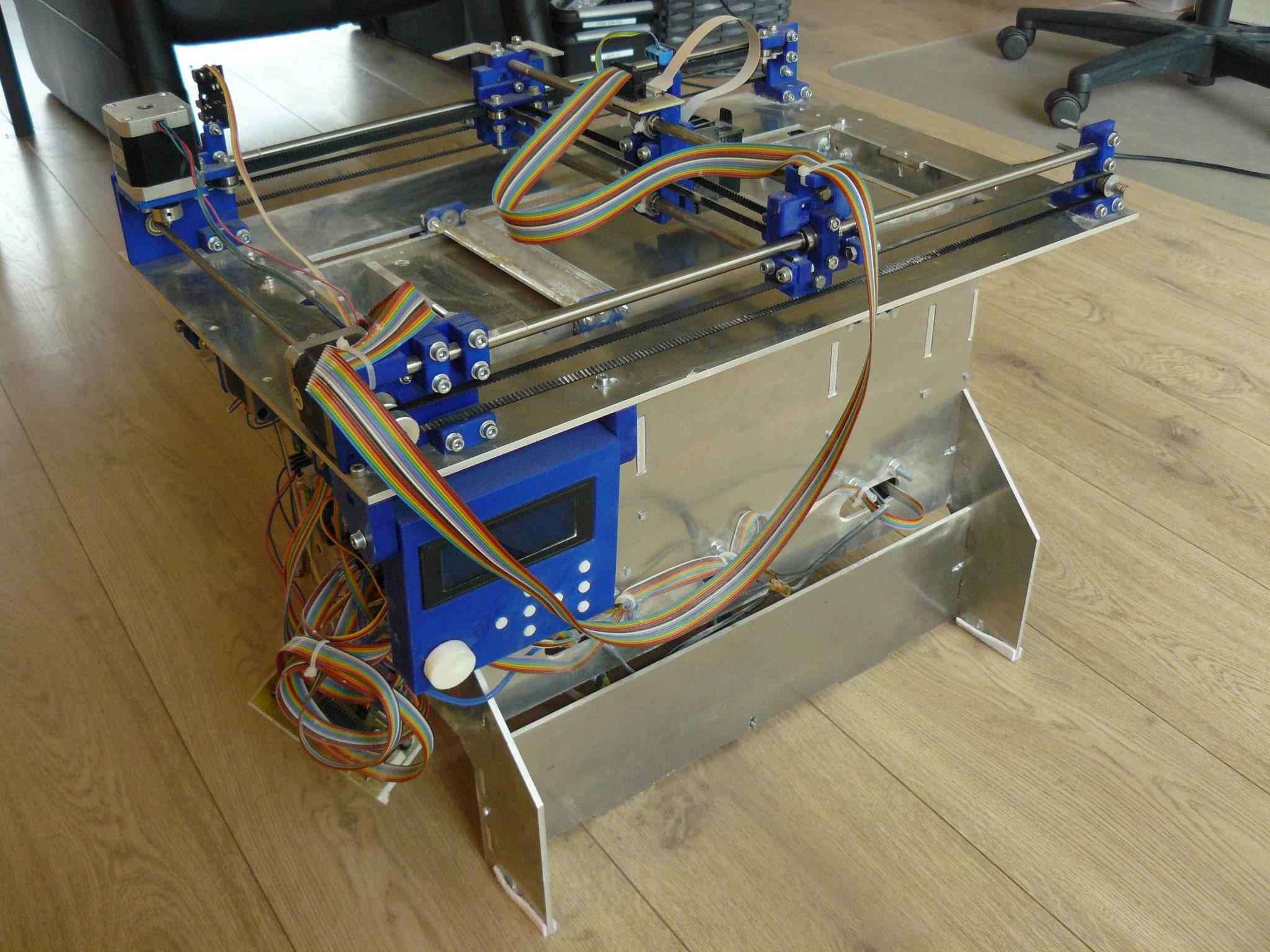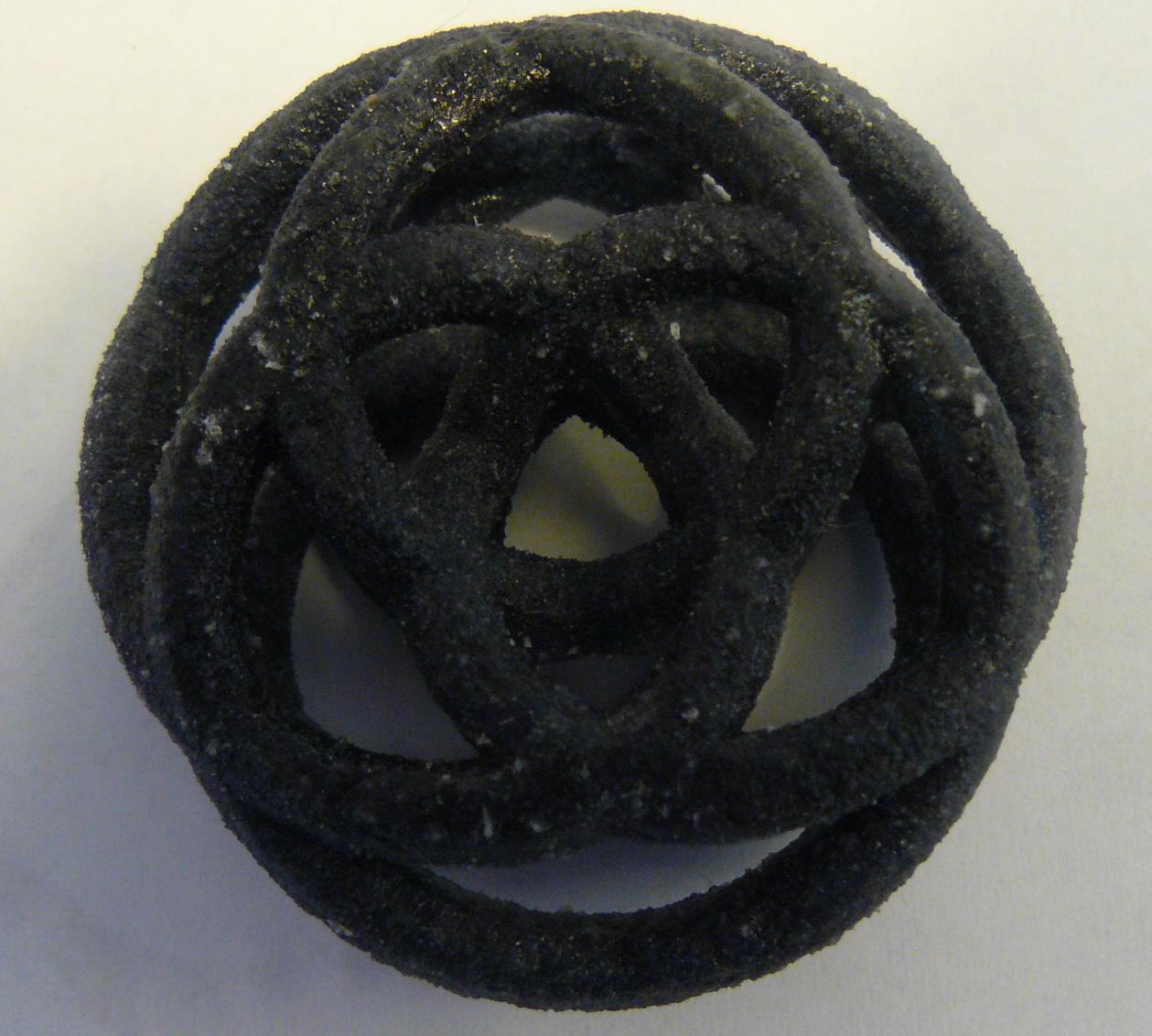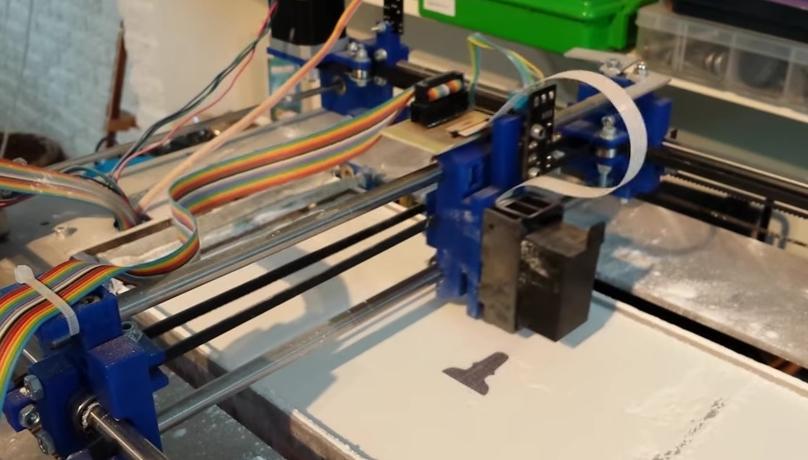When it comes to 3D printers that people use at home, there are typically two options available. There are Fused Deposition Modeling (FDM) based 3D Printers, which melt spools of plastic filament and subsequently lays this material down, one layer at a time, in order to slowly build up an object. Then there are Stereolithographic (SLA) 3D printers which use either a laser or DLP projector to cure (harden) a liquid resin, also in individual layers. Other than these two technologies, all of the other methods are pretty much only available to large corporations who have the capital to afford machines ranging in price between $50,000 and $2 million+.
A 22-year-old young engineer, named Yvo de Haas has hopes of changing this, with an open source 3D printer that he calls the Plan B. The Plan B is not your typical 3D printer. It utilizes a technology which is quite different than the FDM and SLA based printers that are available to the consumer market today. Instead of melting plastic, or curing a liquid resin, his machine uses a fine powder, which is bound together one layer at a time, using a special binding agent that is fed through an inkjet printer head.
“3DP printing looks a lot like ordinary inkjet printing, the only difference being the third dimension,” Haas explained. “It uses a special powder stored in several hoppers and binder stored in either the cartridge or a separate tank. First the printer adds a thin layer of fresh powder on a special bed (build bed) that can lower. An inkjet head prints thin cross sections of a 3D model in the powder with binder. When a layer is done, the build bed lowers by a fraction and a new layer is deposited. Then the process is repeated until the part is complete.”
On the surface, this process looks similar to the methods used by industrial level Selective Laser Sintering (SLS) 3D printers, but rather than having a laser bind the powder together, it uses a glue-like binding agent. Because of the way in which it prints, Haas says that it is capable of printing with higher accuracy when compared to FDM based machines. Also, no support material is ever needed when printing obscurely shaped objects, because of the fact that the powder always supports those objects.
While the Plan B is not actually the fastest 3D printer in the world, Haas says that it has the potential to be faster than FDM machines, because of the simpler movements that the nozzle is required to make, when compared to Cartesian-based FDM printers. While SLA and FDM 3D printers are limited in materials, mostly to plastic based substances, the Plan B is capable of printing in virtually any material that can be turned to a powder. This includes ceramics, stainless steel, graphite, etc.
Sounds great, doesn’t it? Well there are also some disadvantages to using a printer like the Plan B. For starters, it is quite messy. There is a fine powder that is used, and then must be removed from the print bed, and from the printed object itself. The machine must also remain full of powder at all times in order to function properly. Most annoying of all is the post processing that each individual part requires. Since the binding agent is not very strong, most parts need to be handled very delicately. Powder must be removed, and then the objects typically need to be infused with a CA glue or epoxy in order to provide them with structural strength. Another option to increase the strength is by firing the objects in a kiln, something not available to most people.
The printer cost Haas less than 1,000 Euros to construct, and includes the following specifications:
- Buildbox dimensions: 150mmx150mmx100mm (l x w x h)
- Layer thickness: 0.1mm to 0.25mm
- Inkjet resolution: 96DPI (HP C6602)
- Build material: Currently only Zcorp Gypsum and binder without color (this list will expand)
- Step accuracy (X/Y): 0.05mm
- Speed: 60mm/s (higher with future firmware)
- Printing speed: Up to 30mm per hour (higher with future firmware)
- Power consumption: Up to 160W (around 90W average)
- Printer dimensions: 550mmx350mmx450mm (l x w x h)
- Printer weight: 16kg
- Frame material: Aluminum and 3D printed plastic
- Linear guides: LM8UU on 8mm steel rods
- Number of motors: 6x NEMA17 stepper motors
- Features: LCD screen, Keypad with rotary encoder, SD card reader
If you wish to build your own Plan B 3D printer, Haas has uploaded the instructions on his website. What do you think about the Plan B 3D printer? Is it something you think would be worth creating? Discuss in the Plan B 3D Printer forum thread on 3DPB.com. Check out the video below of the Plan B in action:
Subscribe to Our Email Newsletter
Stay up-to-date on all the latest news from the 3D printing industry and receive information and offers from third party vendors.
You May Also Like
High Stakes, High Speed: KVG Acquires 15 Nexa3D HSE 3D Printers to Boost Military Tech
As 3D printing increasingly intersects with defense and military logistics, a new partnership between Nexa3D and mission support logistics firm KVG stresses the growing importance of this technology in strategic...
3D Printer Maker EVO-tech Reborn as NEVO3D — Once More With Feeling
EVO-tech was a 3D printing service and original equipment manufacturer established in 2013 and based in Schörfling am Attersee, Austria. The company produced high-quality material extrusion systems featuring linear bearings,...
3D Printing News Briefs, March 16, 2024: Partnerships, Affordable Bioprinter, & More
We’re starting with dental 3D printing news today, and then moving on to some new partnerships. Then it’s on to some interesting university research about 3D printing plant-based pharmaceuticals, but...
FDR vs. SLA: The Right Polymer Manufacturing Choice for Your Application
The additive manufacturing (AM) industry has no shortage of acronyms when it comes to the various methodologies of industrial 3D printing. In polymer 3D printing, there are three main methods...




































